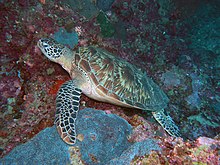Bajau dishes

Kuih Cincin, Sagol Pari and Kuih Penyaram
The Bajau people, which makes up the second largest group in Sabah has a no less impressive selection of delicious Sabah cuisine for you to try out.
As a traditional seafaring people, their cuisine also reflects their lifestyle with its variety of traditional seafood dishes on offer. The dish is made from boiled stingray meat mixed with crushed turmeric, and drenched with stingray liver oil.
Pinjaram, penyaram or kuih UFO as some would call it, is a deep fried kuih that has a nice, chewy texture with a tantalizing pandan aroma.
Kuih Cincin is a sweet biscuit that is fried twice. Apparently this kuih can hardly be found in West Malaysia.
Those who have the recipe, you're most welcome to share with us here!
Another dish that needs to be mentioned is Ambuyat.
Damai Roti Kahwin
What’s so special about roti kahwin? This roti, don’t play play. Got story wan.. let me tell you.This bread has revolutionized the fate of shoplots at Damai. The kopitiam, call Foo Yuen , makes the most awesome bread in the world that it *melts* in your mouth the moment you put it in. I am having difficulty on how to put this into proper words, you have to try it yourself.This restaurant has practically changed the face of the street, many new food businesses appeared to cope with the hungry crowds, shops around closed down and converted into restaurants, attracted many stalls too.
Nasi Kuning Sabah

They sold this near my house. It looks similiar to nasi lemak, but is yellow in colour and with a lot of fresh tumeric taste, a slice of hard boiled egg and sambal with a small piece of fried chicken. It's called Nasi Kuning Sabah (Sabah Yellow Rice). I asked the seller and he told me in Sabah, they have this instead of the usual nasi lemak. I could not verify this. I have been to Sabah a few times but have not seen this sold anywhere.Anyway it tastes nice.
Kadazandusun food

Left: Butod (My Sabah), Right: Pinasakan
Butod is the worm from the sago plant. Can be eaten raw or deep fried
Pinasakan, is a traditional Kadazandusun dish of braised basung fish mixed with takob akob (a tangy wild fruit mainly harvested for its skin), fresh turmeric, salt and bambangan slices.

Left: Manuk Lihing, Right: Tuhau
Lihing (Kadazan-Penampang for rice wine) is made from glutinous rice (pulut) and natural yeast, called ‘sasad’. Manuk Lihing is chicken soup made with sweet rice wine. Sometimes, lihing is referred to as hiing (certain Dusun languages), and others call it kinomol, segantang, kinarung, kinopi, linahas, and even tapai. They are all different (but always fermented, rice-based) beverages.
Tuhau is a Kadazandusun side dish that is a combination of strong tasting ingredients with the tuhau ginger as the main ingredient. Not something that can be found in the west.


